Gregg Elliottlast updated: August 2022
A trained policy analyst with an ecology background and more than 20 years experience in natural resource conservation, Ms. Elliott possesses a well-rounded set of skills in communications, including program development, outreach, research, and writing.
Ms. Elliott writes for nonprofits and agencies on the web and in print media, focusing on research and communications that require a synthesis of science and policy. Additionally, she has developed expertise in online communications and email marketing.
Strategic Communications & Outreach: Achieve specific communication objectives for your organization through outreach to new partners, successful communication campaigns, or professional communications products.
Some Past and Current Projects
-
•Strategic communication planning for NGOs and collaboratives; includes defining mission-driven objectives, timelines, audience analysis and messaging, identifying preferred tactics, tools, and measures of effectiveness.
-
•Creation, management and editing of The Monitor, a thematic monthly newsletter of the Gulf Coastal Plains & Ozarks Landscape Conservation Cooperative. Campaign open rates consistently above industry average.
-
•Coordinated press campaign, using PR Web and partner agency press lists, to launch the Mississippi and Arkansas Conservation Centers - the latter in conjunction with the Arkansas Private Lands Conference.
-
•Professional, eye-catching, and thematically organized annual reports showcasing project results and successes.
Web Content Organization, Development & Marketing: Effectively connect with your audiences through stories written in the appropriate voice, keyword list development, search engine optimization, blogging, and links through client social networks.
Some Past and Current Projects
-
•Development of Arkansas Land Conservation Assistance Network web portal topic coverage, organization and layout in collaboration with state and federal agency partners in Arkansas, as well as technical project leader.
-
•Research and creation of web landing page content for a variety of websites. Identify and prioritize the need for additional information, such as in-depth articles covering surface and ground water supply and quality, feral hog management, white-nose syndrome in bats, and a high priority Conservation Reserve Enhancement Program. SEO for all major content.
-
•Revamping, expansion and day to day management of gcpolcc.org content, using the ning platform. Promote conservation community engagement through an experimental approach to social programs and campaigns. Track campaign response and web traffic.
-
•Creation of customer service surveys to improve online products and report product effectiveness.
-
•Interviewed landowners and stewards to write regular weekly posts on the Private Landowner Network blog, “Keep Working Lands Working” (ghost write) from summer 2010 to summer 2012. Readership of ~16,000 annually in 1.5 years.
Popular or Business Press: Expand the reach of your organization, idea or product through development of case studies, compelling narratives and informational articles.
Some Past and Current Projects
-
•Cover article in The Consultant, magazine of the Association of Consulting Forester, designed to educate foresters about new opportunities in ecosystem markets.
-
•Developed an issue of The Link as a new service to members of the North American Wholesale Lumber Association, covering all major aspects of forest carbon offsets in California’s new carbon market.
White Papers, Synthesis, Analysis: Clearly convey science-based conservation priorities and policies by developing syntheses of policies, studies or practices or through white papers and advocacy.
Some Past and Current Projects
-
•Research conducted online and through interviews of key organizations to determine the current state of development of markets for forest carbon, nutrient trading, and habitat conservation across the country. Includes a focus on the tools available for valuation of ecosystem services as well as summary of online portals providing market access to landowners and others.
Contact Gregg Elliott
REMINDER: This listing is a free service of LandCAN.
Gregg Elliott is not employed by or affiliated with the Land Conservation Assistance Network, and the Network does not certify or guarantee their services. The reader must perform their own due diligence and use their own judgment in the selection of any professional.
By:
K Gregg ElliottA Bird Trail is more than a trail in the literal sense. It is a “necklace” of sites, usually linked by a physiographic feature such as a river, that are united by the theme of “great for bird watching!” Birding Trails are essentially driving routes that help you get from one prime birding spot to the next.
https://www.landcan.org/article/Bird-Trails-and-Important-Bird-Areas/98/
By:
K Gregg ElliottThe first U.S. market for forest carbon offset projects implemented anywhere in the U.S. will open in 2012. The state of California, as in so many things, is poised for a for a first. Under its Global Warming Solutions Act, known as AB32, the Golden State will establish the nation’s first compliance carbon market to allow forest carbon offsets. California’s carbon market, which opened in January 2012, will be the second largest in the world, after the European Union, and the largest in North America. New England’s Regional Greenhouse Gas Initiative, or RGGI, is currently North America’s only compliance market for carbon emissions but does not allow forest carbon offsets.
https://www.landcan.org/article/Californias-Forestry-Offsets-Program/424/
By:
K Gregg ElliottA coalition of organizations that seek to provide sanctuary, rehabilitation, neutering and adoption services for a wide range of animals is seeking a home.
https://www.landcan.org/article/Charitable-Conservation-Contribution-of-Real-Property-Sought-in-WI-or-IL/149/
By:
K Gregg ElliottIn the world of forest carbon offsets, it’s absolutely essential to understand seven general terms with very precise meanings.
- real
- additional
- permanent
- verifiable
- quantifiable
- leakage
- reversal
These concepts apply to all offset projects, but each type of project has its own methodology for calculating offsets. In the case of California’s Cap & Trade program, which allows qualified forest carbon offsets from anywhere in the U.S., projects may consist of reforestation, improved forest management, and avoided conversion (i.e. easements). No matter what the type of forest offset project, this simple ”improved forest management” example serves to demonstrate how these important concepts apply.
https://www.landcan.org/article/Do-You-Know-What-Your-Forest-Carbon-Offsets-Are/425/
By:
K Gregg ElliottOrganic farming has been one of the fastest growing segments of U.S. agriculture for over a decade. After the USDA implemen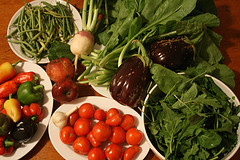 ted national organic standards in 2002, certified organic farmland doubled by 2005. Organic livestock sectors have grown even faster. Despite the rapid growth, organic farms have struggled at times to produce sufficient supply to keep up with the rapid growth in demand, leading to periodic shortages of organic products.
ted national organic standards in 2002, certified organic farmland doubled by 2005. Organic livestock sectors have grown even faster. Despite the rapid growth, organic farms have struggled at times to produce sufficient supply to keep up with the rapid growth in demand, leading to periodic shortages of organic products.
https://www.landcan.org/article/Does-America-Need-More-Organic-Farmers/91/
By:
K Gregg Elliott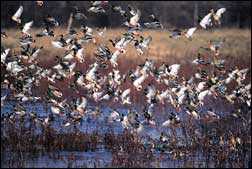 Natural heritage tours may involve travel to areas of natural, ecological, or cultural interest, often but not always with the assistance of a guide. Mississippi has cultural and natural attractions in equal measure, including music, Civil War and civil rights history, culinary tours, agritourism, museums, birding, hunting, and boating.
Natural heritage tours may involve travel to areas of natural, ecological, or cultural interest, often but not always with the assistance of a guide. Mississippi has cultural and natural attractions in equal measure, including music, Civil War and civil rights history, culinary tours, agritourism, museums, birding, hunting, and boating.
https://www.landcan.org/article/Experience-Mississippis-Natural-Heritage/56/
By:
K Gregg Elliott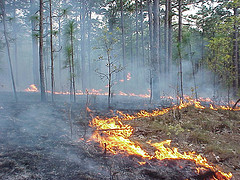 According to the Mississippi Prescribed Fire Council, periodic fire played an important ecological role in shaping southern forests and grasslands. Longleaf pine is the premier example of a native Mississippi ecosystem adapted to fire. It is also a relict landscape, having been largely replaced with loblolly pine. At one time, longleaf pine forests covered 90 million acres across the Southeast, but now only scattered remnants totaling 3 million acres remain. Most are privately owned.
According to the Mississippi Prescribed Fire Council, periodic fire played an important ecological role in shaping southern forests and grasslands. Longleaf pine is the premier example of a native Mississippi ecosystem adapted to fire. It is also a relict landscape, having been largely replaced with loblolly pine. At one time, longleaf pine forests covered 90 million acres across the Southeast, but now only scattered remnants totaling 3 million acres remain. Most are privately owned.
https://www.landcan.org/article/Fire-Management-and-Longleaf-Pine-in-Mississippi/52/
By:
K Gregg ElliottFeral animals are those that have returned to an untamed state after having been domesticated. Such is the case with almost all the wild pigs in North America. Although some of the truly wild Eurasian or “Russian” boars have been brought to the U.S., they are rare, and most feral hogs descend from livestock or are a hybrid of the two species.
https://www.landcan.org/article/Keeping-the-Razorbacks-in-the-Football-Stadium/245/
By:
K Gregg ElliottIn recent years, wildlife biologists working in Mississippi Alluvial Valley bottomland hardwood habitat have collaborated with land managers and foresters to develop forest management recommendations that will sustain habitat beneficial to wildlife dependent on these bottomland forests. Broadly termed “Desired Forest Conditions” or DFCs, these recommendations are based on the combined needs of hundreds of species, from black bears and deer to Swainson’s warblers and downy woodpeckers.
https://www.landcan.org/article/Landscape-Level-Conservation/1615/
By:
K Gregg ElliottTo many landowners a threatened or endangered (T&E) species on their property is anathema because it can herald all kinds of state and federal limitations on use of their property. Ironically enough, with sufficient flexibility, private landowners with T&E species might be able to turn the tables and profit from those organisms. One way is by working with agencies with an interest in protecting or restoring habitat. This could conceivably give landowners an edge in competing for state state or federal grants funds for restoration.
https://www.landcan.org/article/Mitigation-and-Conservation-Banking/71/
By:
K Gregg Elliott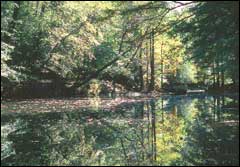 The cradle of the blues and known for its southern charm, Civil War history, and verdant countryside, Mississippi offers outdoor recreation for all tastes. Mississippi culture is very outdoor oriented, heavily influenced by agriculture and hunting, while offering so much more.
The cradle of the blues and known for its southern charm, Civil War history, and verdant countryside, Mississippi offers outdoor recreation for all tastes. Mississippi culture is very outdoor oriented, heavily influenced by agriculture and hunting, while offering so much more.
https://www.landcan.org/article/Outdoor-Activities-in-Mississippi/54/
By:
K Gregg Elliott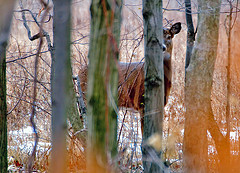 Whether you are a resident of Mississippi, or have never visited, the state is surprisingly diverse. The Mississippi Comprehensive Wildlife Conservation Strategy, or CWCS, recognizes 4 distinct ecoregions, which are large areas that generally share similar climate, geography, and species communities. In addition to abundant wildlife, such as white-tailed deer, mourning dove, and the invasive feral pig, the state also harbors quite a number of unique, and imperiled, species.
Whether you are a resident of Mississippi, or have never visited, the state is surprisingly diverse. The Mississippi Comprehensive Wildlife Conservation Strategy, or CWCS, recognizes 4 distinct ecoregions, which are large areas that generally share similar climate, geography, and species communities. In addition to abundant wildlife, such as white-tailed deer, mourning dove, and the invasive feral pig, the state also harbors quite a number of unique, and imperiled, species.
https://www.landcan.org/article/Surprisingly-Diverse-Mississippi/58/
By:
K Gregg Elliott Renowned for its hunting, Tara Wildlife also offers birding, hiking and a well-equipped conference and recreation facility.
Renowned for its hunting, Tara Wildlife also offers birding, hiking and a well-equipped conference and recreation facility.
https://www.landcan.org/article/Tara-Wildlife-Doing-Business-as-a-Sustainable-Recreation-Destination/207/
By:
K Gregg ElliottOnly a very small subset of species introduced to an area where they are not native will become invasive. But when the invasion begins, it can be costly. The best way to fight an invasion is to prevent one from happening.
https://www.landcan.org/article/Why-are-Invasive-Species-Bad-for-Arkansas/250/
By:
K Gregg ElliottOnly a very small subset of species introduced to an area where they are not native will become invasive. But when the invasion begins, it can be costly. The best way to fight an invasion is to prevent one from happening.
https://www.landcan.org/article/Why-are-Invasive-Species-Bad-for-Mississippi/60/
 Sign In
Sign In
 Sign In
Sign In
